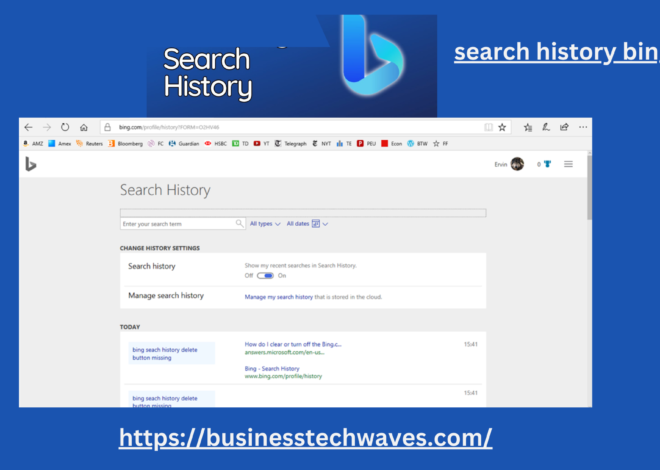
Amazon Review Tracking: A Comprehensive Guide to Monitoring Customer Feedback 2024
Amazon review tracking in today’s digital marketplace, customer reviews have become an indispensable part of the shopping experience. For businesses on platforms like Amazon, reviews are not only a tool to increase visibility and credibility but also a critical component in understanding consumer behavior and product performance. With thousands of products competing for consumer attention, tracking Amazon reviews efficiently has become crucial for sellers. This article will dive deep into the concept of Amazon review tracking, its importance, methods, tools, and best practices, while also addressing some common challenges sellers face in the process.
Why is Amazon Review Tracking Important?
1. Building Trust and Credibility
Amazon review tracking customer reviews are social proof. Prospective buyers often rely heavily on reviews before making purchase decisions. A product with numerous positive reviews is far more likely to convert browsers into buyers than a product with no or few reviews. Moreover, authentic and detailed reviews provide valuable insights about the product, which can alleviate any doubts a customer may have. Tracking these reviews allows businesses to maintain trustworthiness by understanding how customers perceive their products.
2. Improving Product Development
Amazon review tracking monitoring customer reviews allows sellers to gather feedback on product performance. Customers often highlight flaws, areas for improvement, and even potential product features that sellers may have overlooked. This feedback can be leveraged to refine existing products or develop new ones. By consistently tracking reviews, companies can adapt quickly to market demands, improving their offerings and staying ahead of the competition.
3. Boosting Sales Performance
Amazon’s A9 algorithm, which ranks products in search results, considers customer reviews as a key factor. Products with better reviews and ratings are more likely to appear higher in search results, improving visibility. A consistent influx of positive reviews can lead to increased sales and higher rankings. By actively tracking reviews, sellers can address negative feedback and prevent it from negatively impacting the product’s performance on Amazon review tracking.
4. Enhancing Customer Satisfaction
Customers appreciate when their concerns are addressed promptly. Tracking reviews enables businesses to respond quickly to both positive and negative feedback. By responding to negative reviews with solutions or offering replacements, companies can turn an unhappy customer into a loyal one. This kind of proactive engagement enhances the overall customer experience and can result in long-term customer retention.
Methods for Amazon Review Tracking
1. Manual Monitoring
The simplest and most cost-effective way of tracking Amazon reviews is by manually monitoring your product listings. Sellers can periodically check the “Customer Reviews” section on their product page, read through the feedback, and note down any recurring themes or issues. However, this method is time-consuming and inefficient, especially for businesses managing multiple products. It’s also easy to miss important reviews due to the sheer volume of feedback that some products receive.
2. Setting Up Amazon Review Notifications
Amazon allows sellers to set up notifications to receive alerts whenever a new review is posted. This ensures that sellers are immediately informed about new feedback, enabling them to respond quickly. Although this system is a step up from manual monitoring, it can still be overwhelming for sellers with a large portfolio of products, as emails may flood their inboxes. Additionally, notifications do not provide any analytical insights, limiting their usefulness for in-depth review tracking.
3. Using Amazon Review Tracking Tools
The most efficient method for Amazon review tracking is to use specialized review tracking tools. These tools automate the process and provide sellers with comprehensive insights into customer feedback. Many of these platforms offer additional features such as sentiment analysis, trend monitoring, and review aggregation, allowing sellers to make data-driven decisions. Below, we explore some of the top review tracking tools available for Amazon sellers.
Top Tools for Amazon Review Tracking
1. FeedbackWhiz
Amazon review tracking FeedbackWhiz is an all-in-one Amazon feedback and review management tool. It allows sellers to track reviews across their entire product range, offering real-time notifications for new reviews and ratings. One of its standout features is its sentiment analysis tool, which categorizes reviews based on the tone (positive, neutral, or negative), making it easier for sellers to identify areas of improvement. FeedbackWhiz also provides detailed reporting, helping businesses spot trends in customer feedback over time.
2. AMZ Alert
Amazon review tracking Alert is designed specifically for Amazon sellers to track reviews, monitor product listing changes, and manage hijackers. The tool sends instant alerts when a new review is posted, and its sentiment analysis feature allows sellers to filter reviews based on ratings (e.g., focusing only on 1- or 2-star reviews). It also offers a keyword tracking tool, enabling sellers to see what keywords are being mentioned in customer reviews, providing additional insights into customer needs and preferences.
3. Helium 10
Helium 10 is one of the most popular tools for Amazon sellers, offering a comprehensive suite of services, including review tracking. Helium 10’s Review Insights feature allows sellers to view all their product reviews in one place and filter them based on ratings or date. It also provides a “Review Downloader,” which can export reviews in bulk, making it easy to analyze customer feedback at scale. With its extensive product research tools, Helium 10 helps sellers make data-backed decisions regarding inventory, pricing, and marketing.
4. ReviewMeta
ReviewMeta is a unique tool that focuses on identifying fake reviews on Amazon. It analyzes reviews using 12 different tests and provides a review “adjusted score,” which filters out suspected fake reviews. While ReviewMeta doesn’t offer real-time alerts or sentiment analysis, it is incredibly useful for ensuring the authenticity of reviews, giving sellers and buyers confidence in the feedback they see.
Best Practices for Effective Review Tracking
1. Respond to Negative Reviews Promptly
Negative reviews are inevitable, but how you respond to them can make all the difference. When tracking reviews, ensure that you address any negative feedback quickly and professionally. Offer solutions, provide explanations, or offer a replacement if necessary. A timely and empathetic response can help mitigate the damage of a negative review and show prospective customers that you care about their experience.
2. Analyze Trends in Customer Feedback
Rather than looking at reviews in isolation, try to identify trends or recurring themes. Are multiple customers mentioning the same issue? Are certain features being praised repeatedly? Use these insights to refine your product, marketing strategy, or customer service approach. Tools like Helium 10 and FeedbackWhiz are particularly useful for spotting trends in reviews.
3. Leverage Positive Reviews for Marketing
Positive reviews are an excellent marketing asset. Include customer testimonials in your product descriptions, advertisements, and social media posts. Not only does this provide social proof, but it also reinforces the trustworthiness of your brand. By tracking and curating your best reviews, you can create a powerful marketing narrative around your product.
4. Monitor Competitors’ Reviews
In addition to tracking your own reviews, keep an eye on your competitors’ feedback. This can give you insights into what customers like or dislike about similar products, helping you improve your offering and stay ahead of the competition. Tools like AMZ Alert allow you to monitor competitor reviews, offering valuable information on market trends and customer preferences.
5. Regularly Update Your Review Tracking Strategy
Amazon’s marketplace is constantly evolving, and so should your review tracking strategy. Ensure that you’re using the latest tools and methods to track reviews efficiently. Periodically evaluate your tracking approach to see if it’s meeting your needs. As your business grows, you may need to invest in more sophisticated tools or adopt new techniques to keep up with the influx of customer feedback.
Common Challenges in Amazon Review Tracking
1. Fake Reviews
One of the biggest challenges in Amazon review tracking is dealing with fake reviews. These can skew a product’s overall rating and mislead both sellers and buyers. While tools like ReviewMeta can help detect and filter fake reviews, it’s still a persistent issue that requires vigilance from sellers.
2. Overwhelming Volume of Reviews
For successful products, the sheer volume of reviews can become overwhelming to manage. This is where automated tools come in handy, as they help streamline the process and provide actionable insights without requiring sellers to read every single review.
3. Inconsistent Review Policies
Amazon frequently updates its review policies to combat review manipulation. Sellers need to stay up-to-date with these changes to ensure compliance and avoid penalties. Keeping track of policy updates and understanding how they affect review collection can be a challenge, especially for new sellers.
Conclusion
Amazon review tracking is an essential part of any successful selling strategy on the platform. Whether you’re looking to build credibility, improve your products, or boost your sales rankings, monitoring and analyzing customer reviews provides invaluable insights. By adopting effective review tracking methods and using the right tools, sellers can turn customer feedback into a powerful asset, driving growth and fostering long-term success on Amazon.
In a competitive e-commerce landscape, staying on top of reviews is not just a best practice—it’s a necessity.


